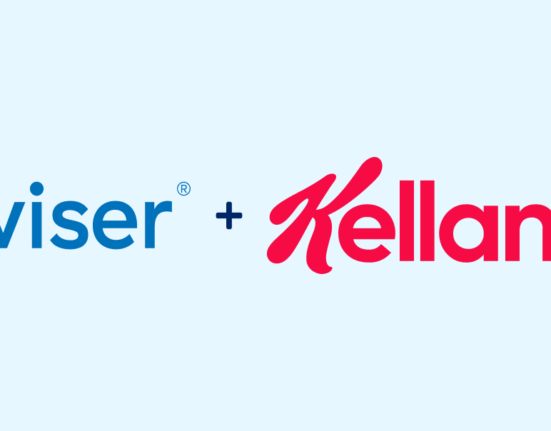Most companies prioritize increasing sales and revenue wherever they can. It only makes sense, as revenue is a key factor in the success and growth of your business.
But this is easier said than done. If it was simple, then every company’s profits would be through the roof.
One of the best ways to ensure a revenue boost is to focus on your customers.
The way that you market and advertise can attract new customers and help improve your relationships with current ones, which in turn will boost your overall profits.
What Does It Mean to Increase Your Revenue?
Revenue is all income that a business is bringing in, from both sales and other areas like interest or investments.
Generally, companies stay on the lookout for any other areas of income they can use to generate more revenue. For most, this is done by increasing sales or increasing the amount of money gained per sale by creating a strategic pricing strategy.
In other words, revenue and sales are undoubtedly connected, and a company relies on its sales to increase the amount of revenue that they are bringing in. This is why it’s important that a company creates a smooth, manageable sales process.
How to Increase Revenue and Drive Growth
There’s a multitude of strategies that can help drive revenue growth, but it’s important that you choose what works best for your business goals. Consider factors like:
- Product and strategy compatibility
- Buyer motivations
- Difficulty of implementation
- Your future company goals and expectations
Some strategies focus on particular issues, but many can work together simultaneously to create a greater impact.

No. 1: Define Your Goals Clearly
The key to any well-executed business strategy is a set of defined goals followed by a thorough and precise execution plan. These goals should outline what the future success of your business looks like, especially when it comes to revenue.
For example, if you’re a new business, your main revenue goal is likely to achieve profitability. Once you’ve surpassed this and grown a little more, you might start to aim higher by trying to gain more avenues of revenue generation or expanding your product line.
Once you have these goals outlined and clearly defined, you can start to focus on exactly how to achieve them.
No. 2: Cross-sell and Upsell
A lot of businesses get caught up in the idea of gaining as many new customers as possible. And it makes sense—more customers mean more sales.
But make sure you don’t forget about the customers you already have. There are a few different strategies you can focus on to generate more revenue from your preexisting clients, like cross-selling and upselling.
Cross-selling is when you entice your current customers into purchasing other products or services of yours. Because they have already bought from you and have experienced the quality of your products, there is a relationship there that you can build off of.
Upselling is a similar strategy that involves educating your customers about a higher scale product of yours that can fulfill their needs even better than the current product they have from you.
By selling additional or more expensive products to customers you were already getting sales from, you generate an immediate increase in the revenue already being accounted for.
No. 3: Develop a Strong Pricing Strategy
If you have a product or service or that you know is price sensitive, make sure your price tag is as optimized as possible.
Check in on your competitors and see what they’re pricing for similar products. Maybe you’re losing out on customers with prices that are too high or are losing out on profits with prices that are too low. Addressing either of these issues could immediately boost your revenue.
However, try to avoid sudden changes in price if you do decide to go with a different strategy. Your preexisting shoppers will notice if your product prices suddenly change drastically, and this could drive them away and disrupt sales.
If you do change your prices and start to notice a negative impact, don’t be afraid to readjust until the fit is right for you. You might even consider a dynamic pricing strategy that can stay flexible and adapt to fit your needs as they come up. This way, you are maximizing your profits at every step.

No. 4: Offer Discounts or Complimentary Services
A well-timed discount will entice more shoppers to purchase your products. This works especially well if you sell any high-end items that might be inaccessible to some shoppers the rest of the time. A lower price will often pull in new shoppers once they see the value.
The discounts you offer can vary, from seasonal promotions or BOGO deals, to brand or store-wide sales for a limited time. You also offer frequent buyer discounts to incentivize your more loyal customers to keep coming back.
Another option is adding complimentary services to the products you already sell. For example, if you sell large appliances like washing machines, you might offer routine maintenance or cleaning check-ups as well for a slight additional cost.
Adding these types of services may help you gain new customers and could help maintain your existing relationships.
Check if there are any similar services your competitors are offering to see what’s already working for some shoppers and to optimize your own offers.
No. 5: Add or Eliminate Shipping Prices
If you haven’t been charging shipping for your online products, consider adding a fee with each order. This way you can generate an immediate increase in revenue without showing shoppers a large price jump.
Even just a small fee on each order can make a huge difference.
If you have been charging for shipping, or if you implement this strategy and notice a decrease in sales, consider dropping your shipping fees for a short period of time to entice new shoppers to make more purchases. Customers view free shipping as a good deal, sometimes even better than a conventional promotion.
No. 6: Expand Your Product Options
If you are a well-established business with a preexisting customer base, consider offering new products and services to reinvigorate your sales.
Diversifying your product line can often help you reach an audience that was just outside of your current reach. Do your research and find out if shoppers are buying products that are similar to yours that you aren’t offering. Then, see if it’s feasible for your brand to fill this gap.
This might involve updated older products that aren’t selling as well anymore, or maybe even just rebranding these products and marketing them from a different angle.
This strategy can help to increase the revenue you are pulling in from your current customers, with the added bonus of winning the sale away from competitors.

No. 7: Optimize Your Marketing Strategies
Analyze your customer data to determine which products are selling the best and who exactly is buying them. With this information, you can develop data-driven targeted promotions to gain more visibility and increase sales.
Targeted messaging and personalized advertisements have become an essential part of any strong marketing strategy with 91 percent of shoppers saying they prefer stores that send them promotions and advertisements relative to their interests, according to an Accenture report.
There are several different strategies to choose from to increase your product visibility, such as:
- Pay-per-click ads
- Social media advertisements
- Email marketing
- Traditional flyer or billboard marketing
Any of these can reach new customers and increase sales.
As you can tell from this list of strategies, there are many ways you could generate new revenue for your business. The key is to implement strategies that work for your specific goals.
Finding the right strategies for your brand can make a huge difference for your business growth, so don’t be afraid to mix and match or change up your strategies when they aren’t working.














